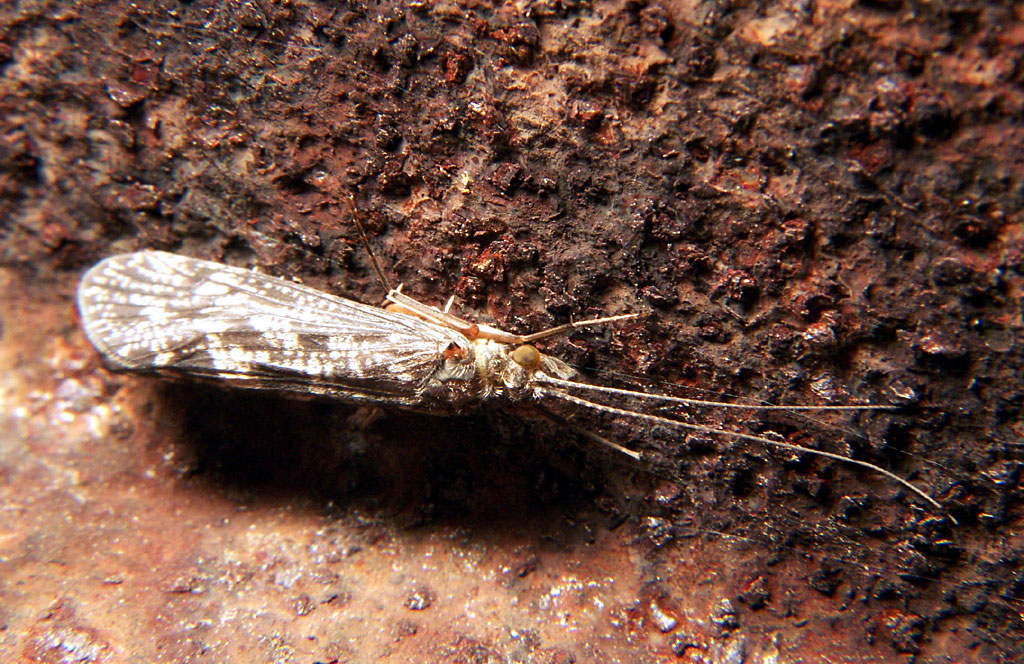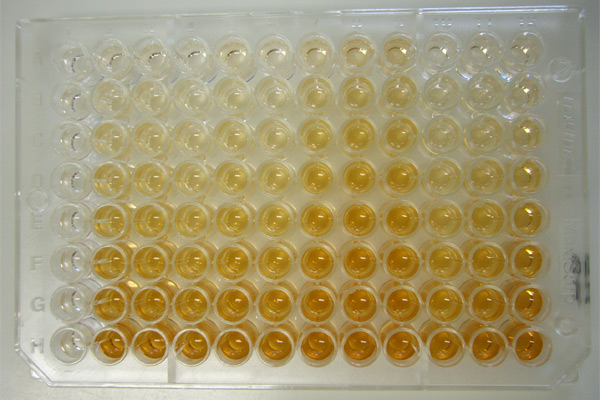|
Bioassay
A bioassay is an analytical method to determine the potency or effect of a substance by its effect on animal testing, living animals or plants (''in vivo''), or on living cells or tissues (''in vitro''). A bioassay can be either quantal or quantitative, direct or indirect. If the measured response is binary, the assay is mwod:quantal, quantal; if not, it is Quantitative research, quantitative. A bioassay may be used to detect biological hazards or to give an assessment of the quality of a mixture. A bioassay is often used to monitor water quality as well as wastewater discharges and its impact on the surroundings. It is also used to assess the environmental impact and safety of new technologies and facilities. Bioassays are essential in pharmaceutical, medical and agricultural sciences for development and launching of new drugs, vitamins, etc. Principle A bioassay is a biochemical test to estimate the potency of a sample compound. Usually this potency can only be measured rela ... [...More Info...] [...Related Items...] OR: [Wikipedia] [Google] [Baidu] |
Assay
An assay is an investigative (analytic) procedure in laboratory medicine, mining, pharmacology, environmental biology and molecular biology for qualitatively assessing or quantitatively measuring the presence, amount, or functional activity of a target entity. The measured entity is often called the analyte, the measurand, or the target of the assay. The analyte can be a drug, biochemical substance, chemical element or compound, or cell in an organism or organic sample. An assay usually aims to measure an analyte's intensive property and express it in the relevant measurement unit (e.g. molarity, density, functional activity in enzyme international units, degree of effect in comparison to a standard, etc.). If the assay involves exogenous reactants (the reagents), then their quantities are kept fixed (or in excess) so that the quantity and quality of the target are the only limiting factors. The difference in the assay outcome is used to deduce the unknown quality ... [...More Info...] [...Related Items...] OR: [Wikipedia] [Google] [Baidu] |
Umu Chromotest
For pharmacology and genetics, the Umu Chromotest, first developed and published by Oda et al., is a biological assay (bioassay) to assess the genotoxic potential of chemical compounds. It is based on the ability of DNA-damaging agents to induce the expression of the umu operon. In connection with the damage inducible (din) genes recA, lexA and umuD, the umuC gene is essentially involved in bacterial mutagenesis through the SOS response. This test uses an operon fusion placing the lac operon (responsible for producing β-galactosidase, a protein which degrades lactose) under the control of the umu-related proteins. A simple colorimetric test is possible by adding a lactose analog which is degraded by β-galactosidase, producing a colored compound which can be measured quantitatively through spectrophotometry. The degree of color development is an indirect measure of the β-galactosidase produced, which itself is directly related to the amount of DNA damage. The Umu Chromotest h ... [...More Info...] [...Related Items...] OR: [Wikipedia] [Google] [Baidu] |
Bioindicator
A bioindicator is any species (an indicator species) or group of species whose function, population, or status can reveal the qualitative status of the environment. The most common indicator species are animals. For example, copepods and other small water crustaceans that are present in many water bodies can be monitored for changes (biochemical, physiological, or behavioural) that may indicate a problem within their ecosystem. Bioindicators can tell us about the cumulative effects of different pollutants in the ecosystem and about how long a problem may have been present, which physical and chemical testing cannot. A biological monitor or biomonitor is an organism that provides quantitative information on the quality of the environment around it. Therefore, a good biomonitor will indicate the presence of the pollutant and can also be used in an attempt to provide additional information about the amount and intensity of the exposure. A biological indicator is also the name gi ... [...More Info...] [...Related Items...] OR: [Wikipedia] [Google] [Baidu] |
Ames Test
The Ames test is a widely employed method that uses bacteria to test whether a given chemical can cause mutations in the DNA of the test organism. More formally, it is a bioassay, biological assay to assess the mutagenic potential of chemical compounds. A positive test indicates that the chemical is mutagenic and therefore may act as a carcinogen, because cancer is often linked to mutation. The test serves as a quick and convenient assay to estimate the carcinogenic potential of a compound because standard carcinogen assays on mice and rats are time-consuming (taking two to three years to complete) and expensive. However, false-positives and false-negatives are known. The procedure was described in a series of papers in the early 1970s by Bruce Ames and his group at the University of California, Berkeley. General procedure The Ames test uses several strains of the bacterium ''Salmonella typhimurium'' that carry mutations in genes involved in histidine synthesis. These strains a ... [...More Info...] [...Related Items...] OR: [Wikipedia] [Google] [Baidu] |
Bioindicator
A bioindicator is any species (an indicator species) or group of species whose function, population, or status can reveal the qualitative status of the environment. The most common indicator species are animals. For example, copepods and other small water crustaceans that are present in many water bodies can be monitored for changes (biochemical, physiological, or behavioural) that may indicate a problem within their ecosystem. Bioindicators can tell us about the cumulative effects of different pollutants in the ecosystem and about how long a problem may have been present, which physical and chemical testing cannot. A biological monitor or biomonitor is an organism that provides quantitative information on the quality of the environment around it. Therefore, a good biomonitor will indicate the presence of the pollutant and can also be used in an attempt to provide additional information about the amount and intensity of the exposure. A biological indicator is also the name gi ... [...More Info...] [...Related Items...] OR: [Wikipedia] [Google] [Baidu] |
Daphnia Magna
''Daphnia magna'' is a small planktonic crustacean (adult length 1.5–5.0 mm) that belongs to the subclass Phyllopoda. Description ''Daphnia magna'' is a typical water flea of the genus ''Daphnia''. The females reach up to 5 mm in size, the males about 2 mm, thus they are among the largest species in the genus. The body is protected by a translucent carapace made of chitin, a transparent polysaccharide. It has a ventral opening and five pairs of thoracic limbs, used to help the filtering process. Spike rows run along the back of the carapace. The intestine is hook-shaped and has two digestive ceca. The head has two antennae and a large compound eye. Adult females can be distinguished from those of otherwise similar species such as '' D. pulex'' by the absence of a comb on the abdominal claw and the presence of two distinct combs on the abdomen. The males are smaller than the females and have larger first antennas, a diagnostic feature that distinguishes them ... [...More Info...] [...Related Items...] OR: [Wikipedia] [Google] [Baidu] |
Radioimmunoassay
A radioimmunoassay (RIA) is an immunoassay that uses radioactive tracer, radiolabeled molecules in a stepwise formation of immune complexes. A RIA is a very sensitive in vitro assay technique used to measure concentrations of substances, usually measuring antigen concentrations (for example, hormone levels in blood) by use of antibody, antibodies. The RIA technique is extremely sensitivity (tests), sensitive and extremely Specificity (tests), specific, and although it requires specialized equipment, it remains among the least expensive methods to perform such measurements. It requires special precautions and licensing, since radioactive substances are used. In contrast, an immunoradiometric assay (IRMA) is an immunoassay that uses radiolabeled molecules but in an immediate rather than stepwise way. A radioallergosorbent test (RAST) is an example of radioimmunoassay. It is used to detect the causative allergen for an allergy. Method Classically, to perform a radioimmunoassay, a k ... [...More Info...] [...Related Items...] OR: [Wikipedia] [Google] [Baidu] |
Aquatic Ecology
An aquatic ecosystem is an ecosystem found in and around a body of water, in contrast to land-based terrestrial ecosystems. Aquatic ecosystems contain communities of organisms—aquatic life—that are dependent on each other and on their environment. The two main types of aquatic ecosystems are marine ecosystems and freshwater ecosystems. Freshwater ecosystems may be lentic (slow moving water, including pools, ponds, and lakes); lotic (faster moving water, for example streams and rivers); and wetlands (areas where the soil is saturated or inundated for at least part of the time). Types Marine ecosystems Marine coastal ecosystem Marine surface ecosystem Freshwater ecosystems Lentic ecosystem (lakes) Lotic ecosystem (rivers) Wetlands Functions Aquatic ecosystems perform many important environmental functions. For example, they recycle nutrients, purify water, attenuate floods, recharge ground water and provide habitats for wildlife. The biota of an aqua ... [...More Info...] [...Related Items...] OR: [Wikipedia] [Google] [Baidu] |
Immunoassay
An immunoassay (IA) is a biochemical test that measures the presence or concentration of a macromolecule or a small molecule in a solution through the use of an antibody (usually) or an antigen (sometimes). The molecule detected by the immunoassay is often referred to as an "analyte" and is in many cases a protein, although it may be other kinds of molecules, of different sizes and types, as long as the proper antibodies that have the required properties for the assay are developed. Analytes in biological liquids such as blood plasma, serum or urine are frequently measured using immunoassays for medical and research purposes. Immunoassays come in many different formats and variations. Immunoassays may be run in multiple steps with reagents being added and washed away or separated at different points in the assay. Multi-step assays are often called separation immunoassays or heterogeneous immunoassays. Some immunoassays can be carried out simply by mixing the reagents and samples an ... [...More Info...] [...Related Items...] OR: [Wikipedia] [Google] [Baidu] |
Euglena Gracilis
''Euglena gracilis'' is a freshwater species of euglenid, a microscopic type of algae, in the genus ''Euglena''. It has secondary chloroplasts, and is a mixotroph able to feed by photosynthesis or phagocytosis. It has a highly flexible cell surface, allowing it to change shape from a thin cell up to 100 μm long to a sphere of approximately 20 μm. Each cell has two flagella, only one of which emerges from the flagellar pocket (reservoir) in the anterior of the cell, and can move by swimming, or by so-called "euglenoid" movement across surfaces. ''E. gracilis'' has been used extensively in the laboratory as a model organism, particularly for studying cell biology and biochemistry. Other areas of their use include studies of photosynthesis, photoreception, and the relationship of molecular structure to the biological function of subcellular particles, among others. ''Euglena gracilis'' is the most studied member of the Euglenaceae. ''E. gracilis'' was discovered as ... [...More Info...] [...Related Items...] OR: [Wikipedia] [Google] [Baidu] |
Whole Effluent Toxicity
{{d ...
Whole may refer to: Music * Whole note, or semibreve * Whole step, or major second * ''Whole'' (Jessa Anderson album) or the title song, 2014 * ''Whole'' (Soil album), 2013 * ''Whole'', an EP by Pedro the Lion, 1997 * "Whole", a song by Basement from '' Colourmeinkindness'', 2012 * "Whole", a song by Flaw from '' Through the Eyes'', 2001 * "Whole", a song by Jacob Whitesides, 2019 Other uses * Whole (campaign), a British anti-stigma mental health campaign. * , a music festival held at Ferropolis, Gräfenhainichen, Germany. * ''Whole'' (film), a 2003 American documentary by Melody Gilbert. * Whole milk, milk which has not had fat removed. See also * Holism, a philosophical and social theory * Hole (other) A hole is a hollow place, an opening in/through a solid body, or an excavation in the ground. Hole or holes may also refer to: Science and healthcare * Black hole * Electron hole, a concept in physics and chemistry * K-hole, a psychological s ... [...More Info...] [...Related Items...] OR: [Wikipedia] [Google] [Baidu] |




